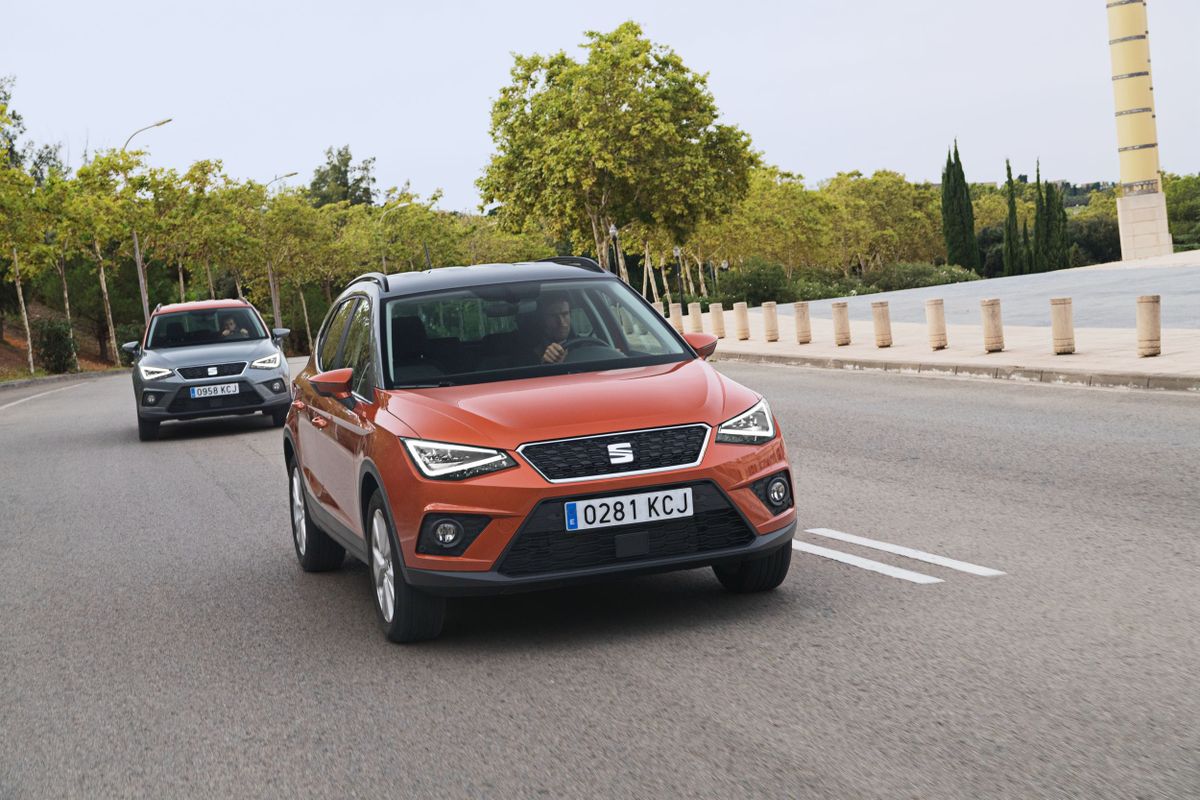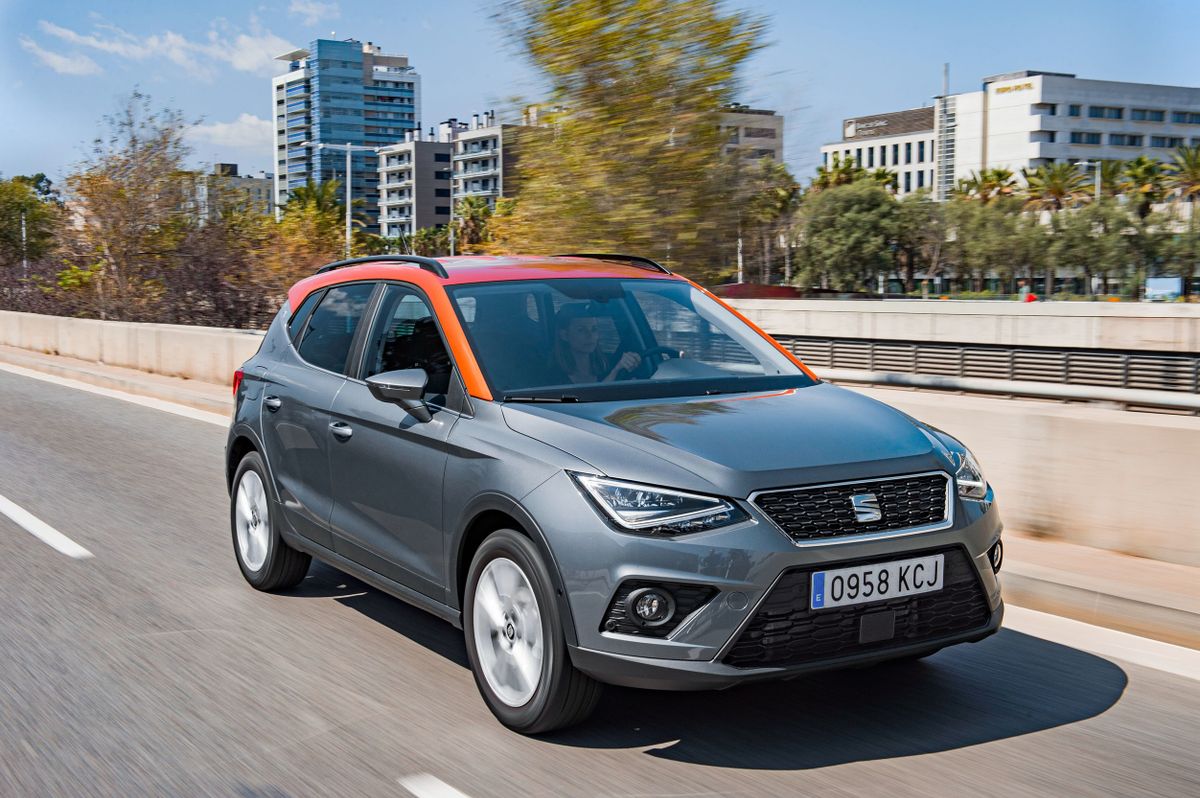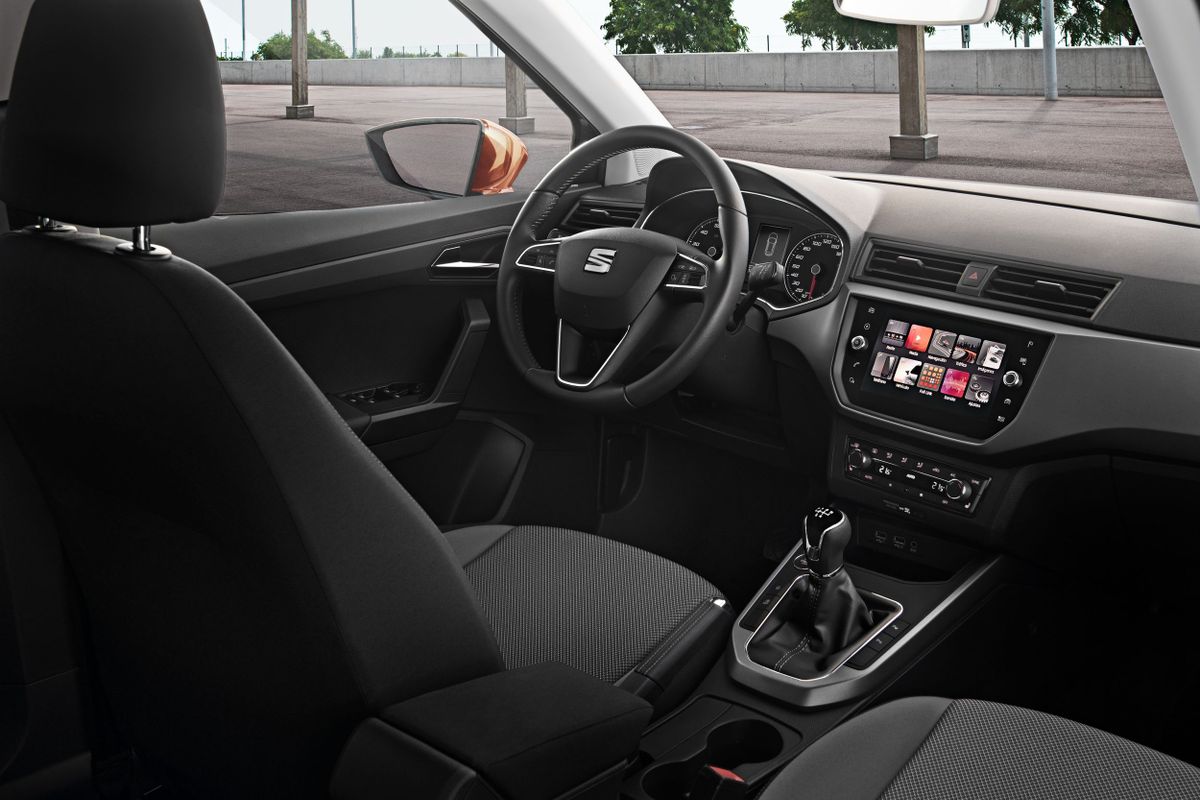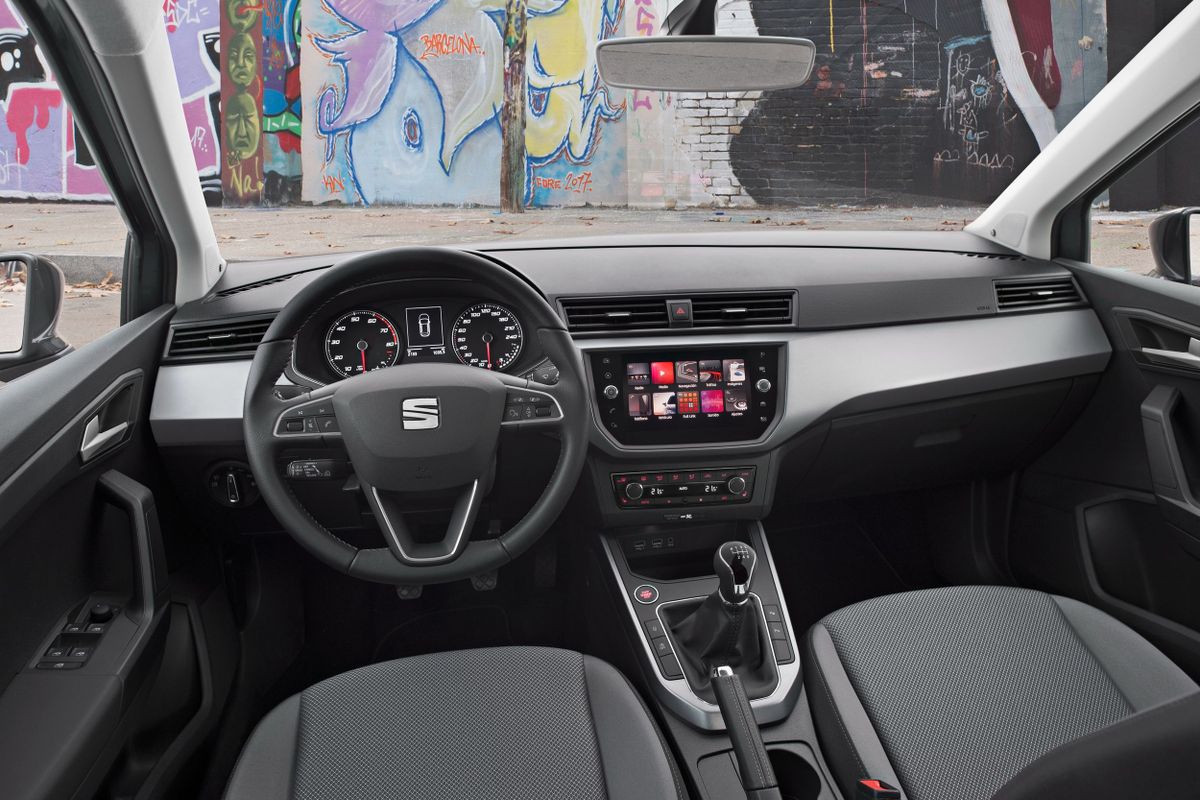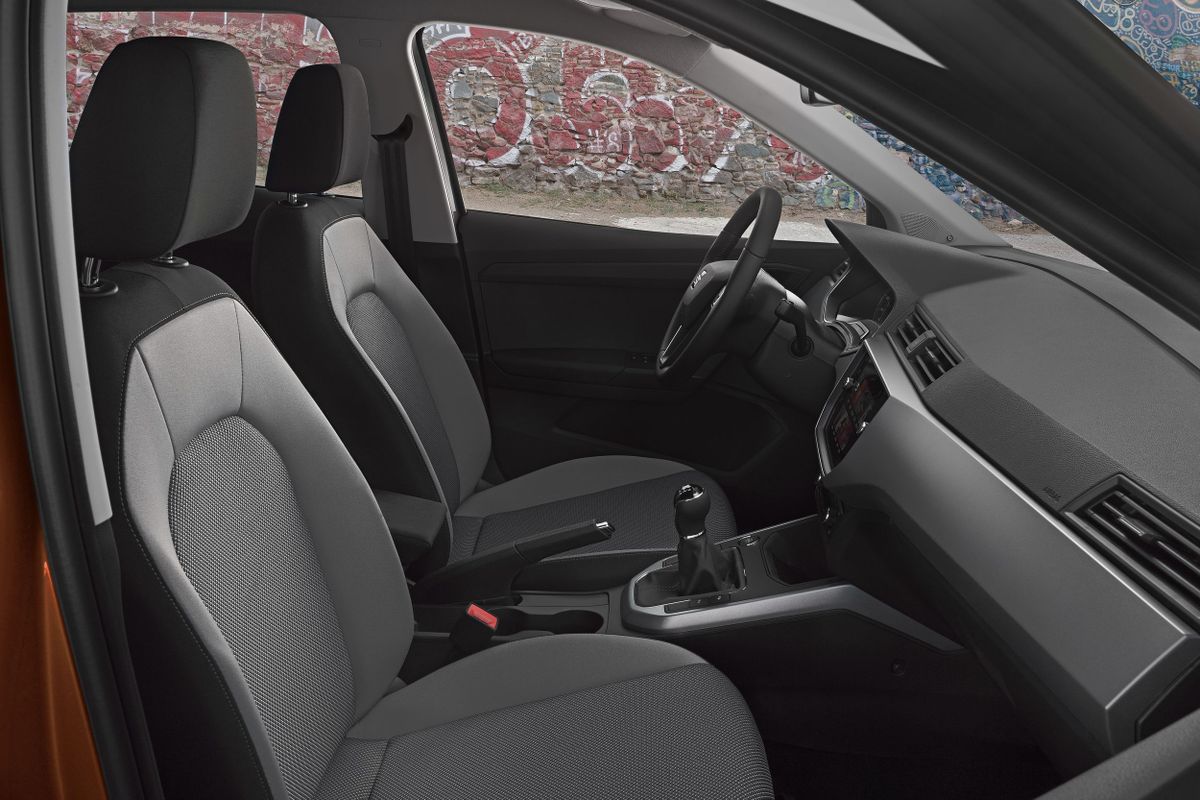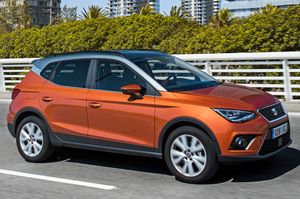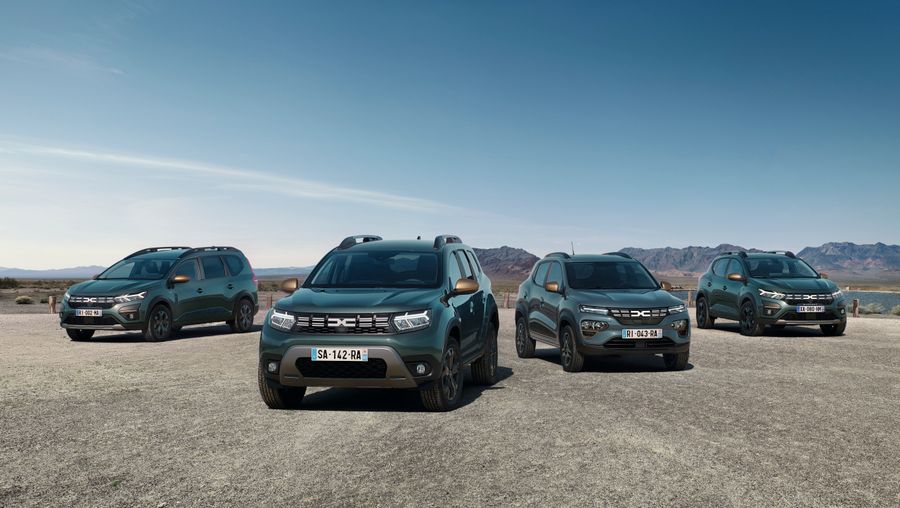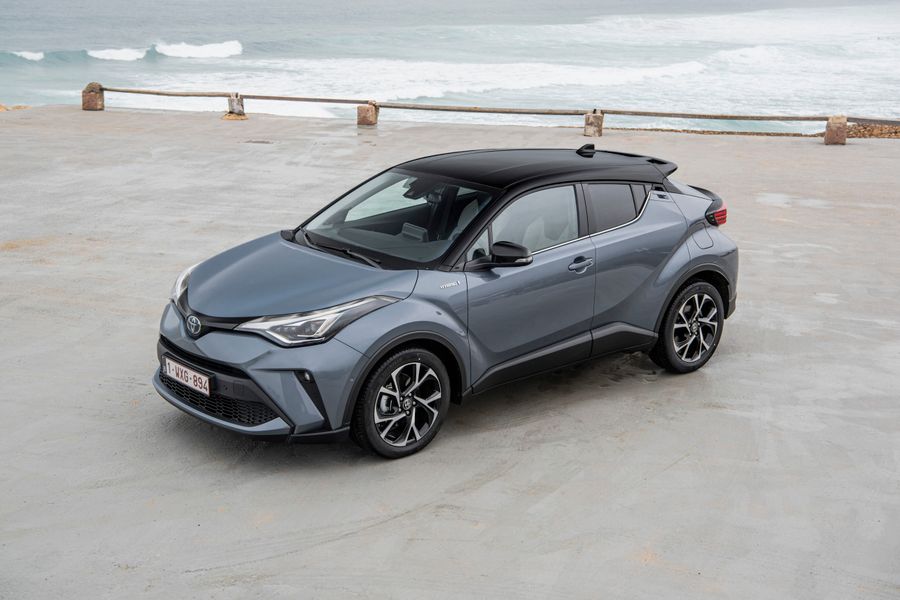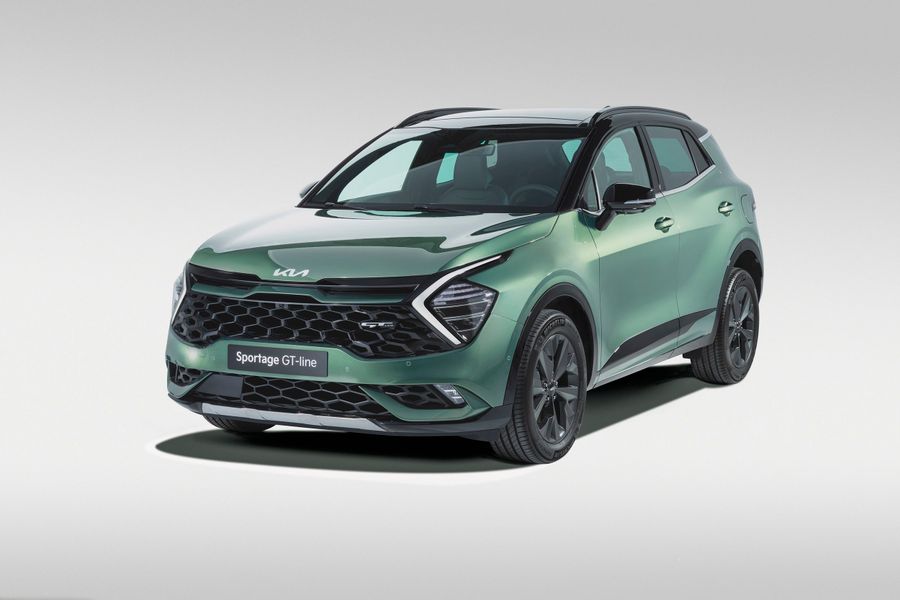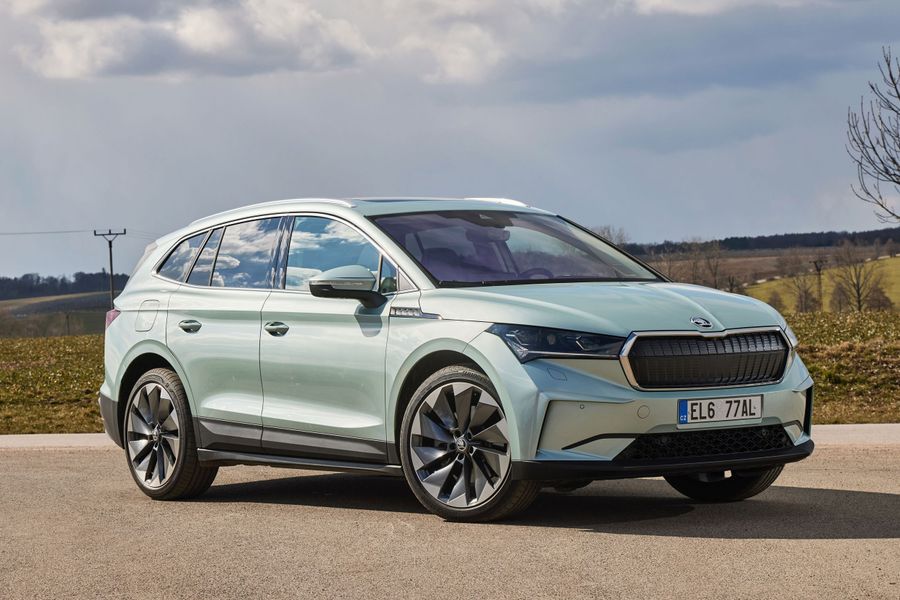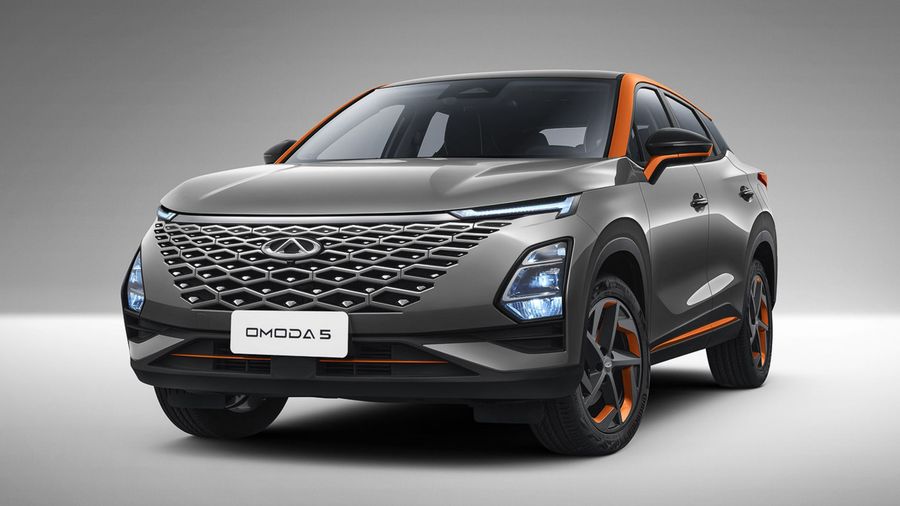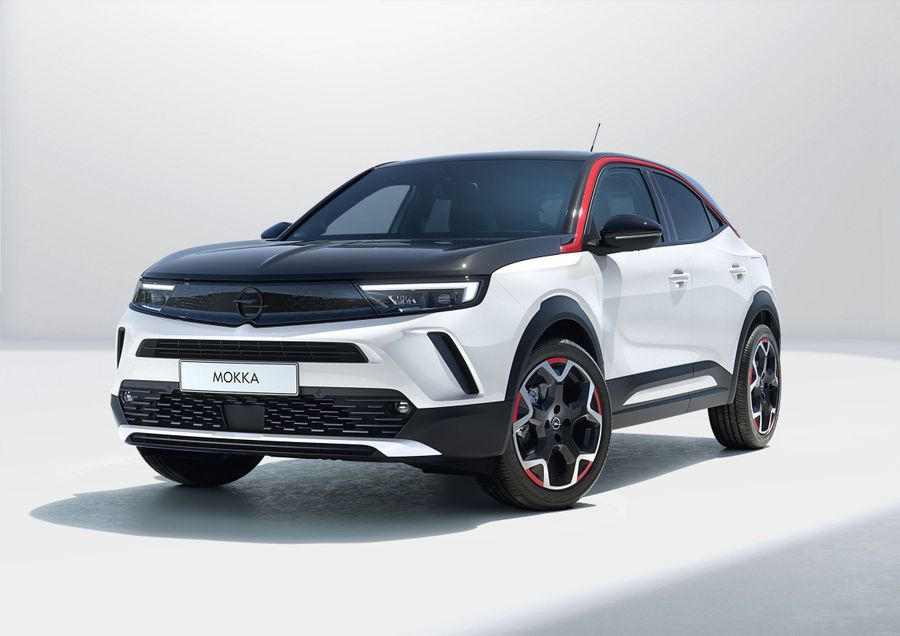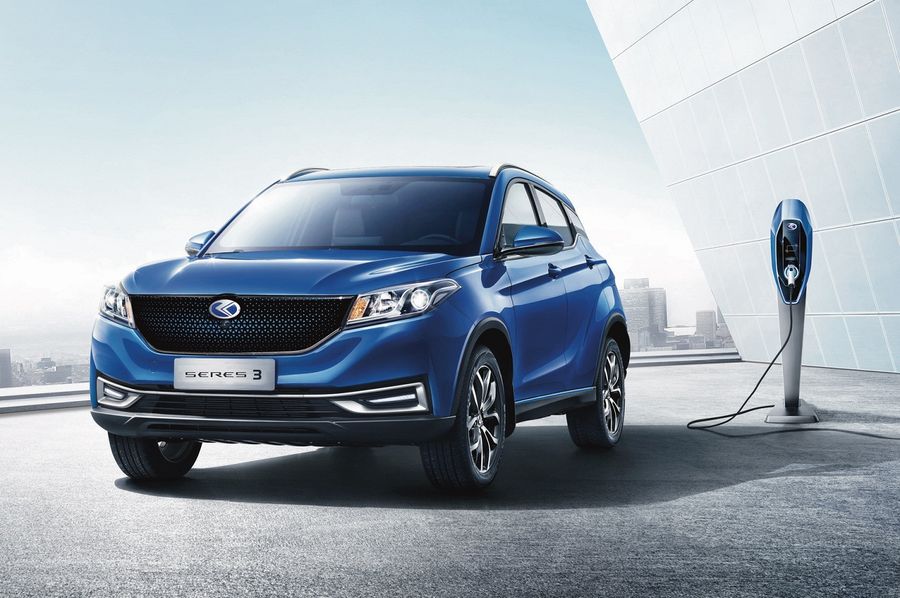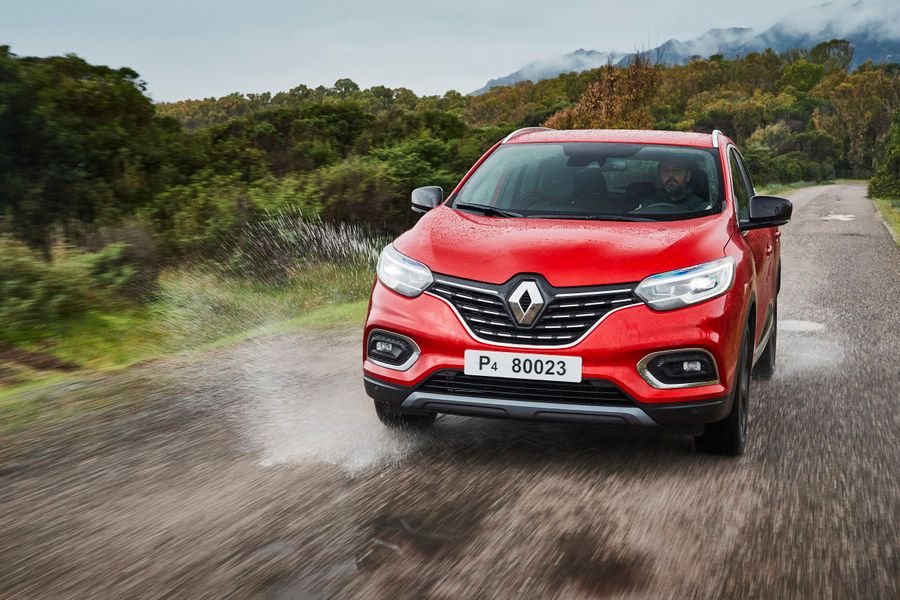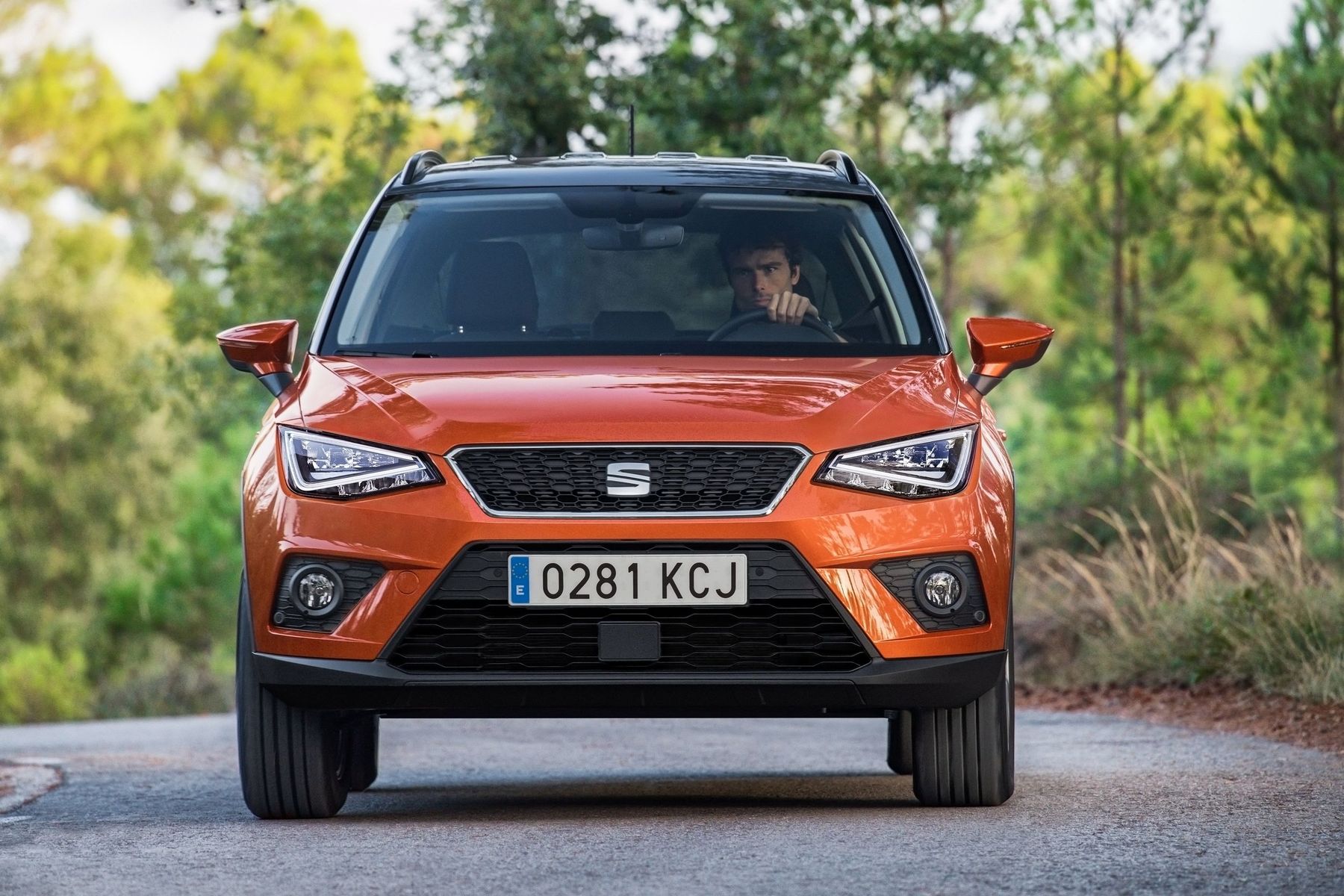
The 2017 first generation SEAT Arona SUV
The SEAT Arona is a small five-door front-wheel drive SUV, manufactured by SEAT since 2017. Being targeted at the European market, the vehicle can boast of a stylish design, a spacious body, efficient powertrains and good mobility. In Israel, the car comes with a 1.0 liter turbocharged engine producing 110 hp and a semi-automatic transmission (as of 2021).
Exterior
The exterior of the compact car is designed in accordance with the ‘family’ style of the Spanish brand, as it comprises numerous sharp edges and ribs, which makes the SUV not only fresh and attractive, but dynamic and moderately aggressive. The front face of the five-door model demonstrates the predatory gaze of optics, a hexagonal radiator grille with a fine-mesh pattern and a raised bumper with a large ‘mouth’ of the air intake, and its lean rear part attracts attention with a sculpted trunk lid, fancy headlights and a powerful bumper. Plus, the 2017/2018 Arona looks beautiful and energetic in profile, with its expressive ‘folds’ on the sidewalls, large cutouts of wheel arches, a sloping roofline and a ‘window sill’ flying up to the rear part. And the vehicle’s off-road personality is emphasized by a “skirt” made of unpainted plastic along the lower perimeter of the body.
The 2017 SEAT Arona is 4,138 mm long, 1,780 mm wide and 1,543 mm high. The distance between the front and rear axles is 2,564 mm, and its ground clearance is only 155 mm. The five-door model’s kerb weight ranges from 1,615 to 1,700 kg, depending on the modification.
Interior
The 2019/2020 Arona’s interior looks attractive and modern, but a little boring. Such elements as the embossed multi-steering wheel, a laconic dashboard with downward-oriented “sleeping” arrows and a “window” of the on-board computer (as an option - completely virtual), as well as a center console slightly turned towards the driver, with an 8-inch the monitor of the multimedia system and the exemplary “control panel” of the air conditioner add sporty vibes. The interior of the FR version has additional stylish elements: red stitching, “lacquered” inserts, a “sporty” steering wheel truncated at the bottom and, of course, the “FR” nameplates.
The interior is finished with high-quality materials, and the top FR version offers the steering wheel, gear lever and handbrake covered with leather. At the front, the small SEAT is equipped with ergonomic seats with a well-developed profile and sufficient adjustment intervals.
For the rear-row passengers, there is a comfortable backseat, but it is not very spacious, especially in terms of the width (it may be too little space for three passengers). In the standard state, the trunk volume of the SUV is 400 liters, which is a decent figure for the subcompact class. The rear backseat folds in two unequal parts into a flat area, significantly increasing the capacity of the cargo compartment.
Power trains and chassis
In Israel, the 2020/2021 SEAT Arona SUV comes with a single engine (compatible with the Euro-6 environmental standards). This is a turbocharged 1.0-liter EcoTSI three-cylinder gasoline direct injection engine, with adjustable valve timing and 12-valve timing. Thanks to this boost, it produces 110 hp at 5,000-5,500 rpm and 200 Nm of torque at 2,000-3,500 rpm.
The engine is paired with a 7-speed DSG, and only the front-wheel drive version is available (the all-wheel drive transmission is not offered for the SUV, even for an additional fee). The vehicle is based on the front-wheel drive MQB-A0 platform, which implies a transverse arrangement of the power train. It is used on the SEAT and VW Ibiza and Polo vehicles respectively.
The front axle of the Arona is equipped with an independent MacPherson strut suspension, and the rear axle is equipped with a semi-independent beam. Both suspensions include telescopic shock absorbers and steel springs. The car is equipped with a rack and pinion steering system with an electromechanical power amplifier. The SUV has disc brakes: the ventilated front ones, with a diameter of 276 mm, and the rear ones of 230 mm, without ventilation.
Trim levels and equipment
Israeli buyers can choose from two trim levels of the new SEAT Arona: Style and FR. The first one if more affordable and includes: LED headlights, six airbags, 16-inch alloy wheels, electric mirror-glass accessories, dual-zone climate control, rain and light sensors, ABS, ASR, ESC, HBA, hill start assist, a multimedia system with 6 speakers and an 8-inch touchscreen, as well as keyless access, adaptive cruise control, blind spot monitoring and reversing assistance systems. Plus, there is a driver fatigue warning system that analyzes the driver’s actions in a dynamic mode and recognizes the moment of a decrease in concentration and reminds of the need to rest. Warning alerts are sent every 5 seconds in the form of a sound signal and a message on the dashboard, and then repeated as necessary.
The more expensive FR version has a different exterior: it has two-tone color paint (roof and body pillars) and 17-inch wheels. The list of equipment includes front and rear parking sensors, LED taillights, passenger seat adjustment, parking assistance and the SEAT DRIVE PROFILE option.
The SEAT DRIVE PROFILE is a new vehicle personalization system that allows the driver to adapt their car in accordance with their preferences. By changing the mode, the driver can see, hear and feel the changes in the behavior of their SUV. By activating one of three modes (Normal, Sport or Eco), you can change engine power response, steering parameters, interior lighting color (red for Sport and white for Normal and Eco).



